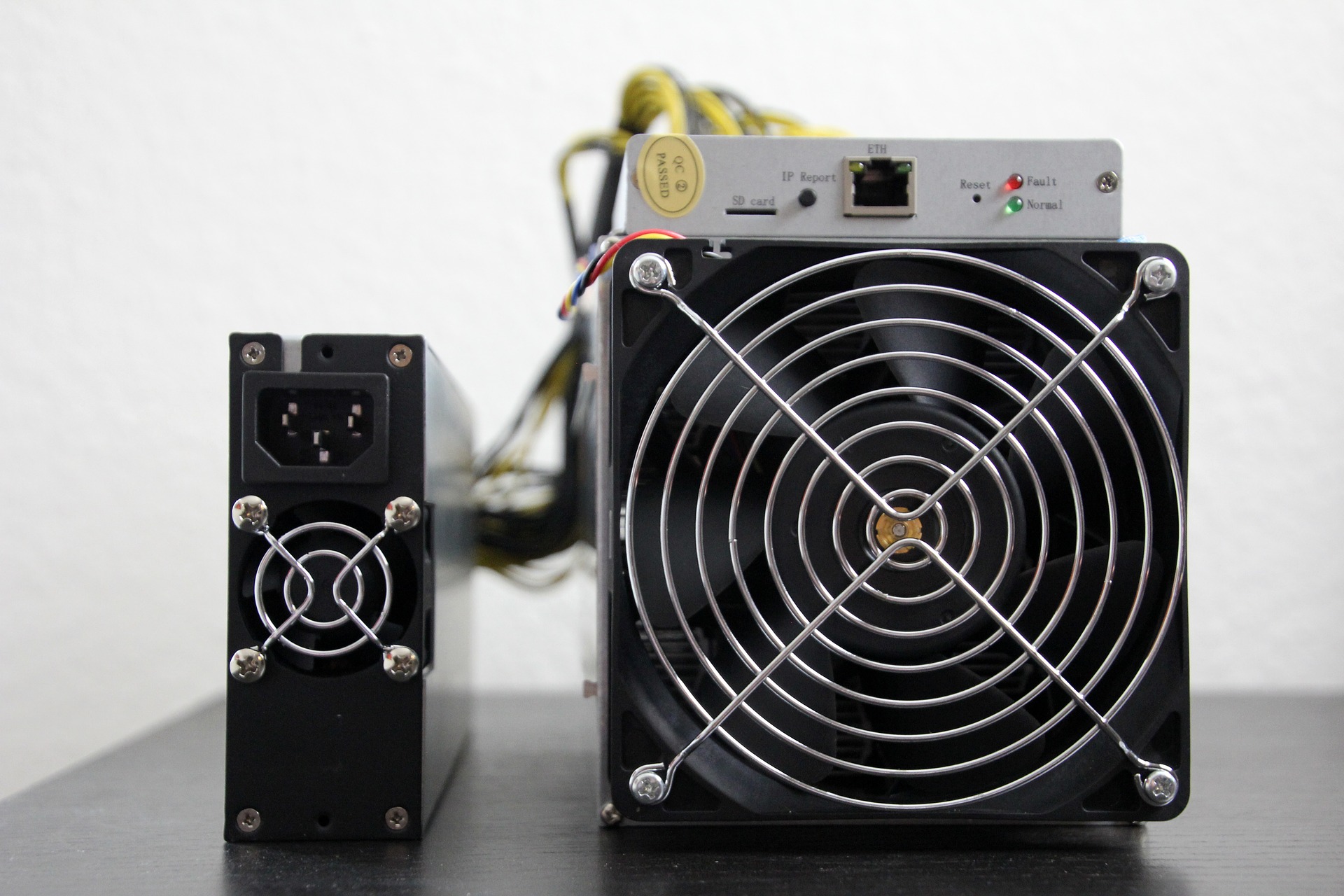In this episode, we cover a topic that may seem unrelated to mineral rights and royalties but in fact is very relevant for mineral and royalty owners. Make sure you listen until the end to find out why and to find out how you can take advantage of the intersection between the oil and gas industry and Bitcoin mining.
Before we get to that, I think it is important to take a step back to talk about just what exactly Bitcoin is. I’ll have to admit, until 2021, I was only vaguely familiar with Bitcoin and would only really notice what was happening when there was a mainstream news article or story that talked about Bitcoin price going up or down.
That said, the events over the past year and half and the subsequent printing of trillions of US Dollars sent me on a journey to learn more about ways to preserve spending power and alternate monetary systems that aren’t subject to inflation and debasement by central banks. And this is where I stumbled into Bitcoin and eventually fell down the rabbit hole so to speak. Lately, Bitcoin has been in the crosshairs with oil and gas operators as a solution to a problem facing the industry right now.
Be sure to also subscribe on Apple Podcasts via the link above and please leave us an honest rating and review. We read every one of them and sincerely appreciate any feedback you have. To ask us a question to be featured on an upcoming episode, please leave a comment below or send an email to feedback@mineralrightspodcast.com.
Bitcoin is:
- A peer-to-peer digital cash system, often referred to as digital gold. Bitcoin is seen as a store of value, like you would treat a savings account.
- Different from the traditional financial system because Bitcoin is immutable. In other words, Bitcoin transactions are recorded on what is called the blockchain which is the register of transactions for the Bitcoin network. These transactions are irreversible so someone can’t come along and change it and decide that you no longer own your Bitcoin.
- It is decentralized so no single party has control over the network. You don’t need permission to send or receive Bitcoin and in this way it is also different than our current banking system which relies on a trusted third party (the bank or other financial institution).
- Bitcoin is secured by a cryptographic algorithm to ensure that transactions are valid and each valid transaction is added to the end of the blockchain. This concept is called proof-of-work and Bitcoin miners are the ones that solve these cryptographic proofs. We will talk about Bitcoin mining in a minute because this is where royalty owners come in.
Interesting Facts About Bitcoin
Bitcoin was created by a pseudonymous individual called Satoshi Nakamoto. No one knows who Satoshi is (or was) but their concept was originally documented in their white paper titled “Bitcoin: A Peer-to-Peer Electronic Cash System”.
Only 21,000,000 Bitcoin will ever be produced and the block reward halves every 210,000 blocks which is approximately every 4 years. This means that the annualized rate of inflation of Bitcoin is continually going down.
As of 2022, the current block reward is 6.25 Bitcoin and the target time is 10-minutes per block which if you do some math means that only 900 Bitcoin are issued each day.
What is Bitcoin Mining?
Bitcoin mining and proof-of-work mining in general (proof-of-work also applies to some other cryptocurrencies) is the process of validating transactions on the blockchain by solving the cryptographic hash function. A hash function refers to the process for compressing data. This is important because cryptocurrencies like Bitcoin have a large number of transactions that make up each block that is added to the blockchain.
Each block has its own hash plus the hash of the previous block, which is what creates the chain. The reason this is so important is because if someone tried to tamper or change a block, they would have to alter each consecutive block as well. Because at this point, it would require so much energy and computing power (not to mention the time that it would take), it becomes nearly impossible to attack. This is what makes Bitcoin secure.
For Bitcoin, miners with specialized computers called Application Specific Integrated Circuits (ASICS) run a series of calculations following the SHA-256 algorithm to create the hash for that block with a specific timestamp. If there is consensus that that is a valid block based on this algorithm, the block is added to the blockchain. If you are the first one to solve this algorithm then you are rewarded with what is called a block reward which like we mentioned is currently 6.25 Bitcoin. Miners also are awarded transaction fees that are paid by individuals to have their transactions validated. The transaction fee is the small charge that you pay to Bitcoin miners to have your transaction included in a block.
In other words, new issuance of Bitcoin is awarded to miners for providing the service of validating transactions on the network. Bitcoin mining requires expensive and very specialized computing hardware called an ASIC (application specific Integrated Circuit) that is made solely to mine Bitcoin. In other words, you can’t go and plug in a Bitcoin ASIC into a computer monitor and start playing your favorite video game on it.
Where is Bitcoin Mining done?
These ASICS are also fairly energy intensive (on the order of the computer server that is probably whirring away in some data center to allow you to listen to this show). Specialized data centers with hundreds or thousands of ASICS are called mining farms.
Market dynamics reward miners that can find the lowest cost electricity to mine Bitcoin and as a result, many Bitcoin miners are looking towards off-grid energy sources and stranded energy to mine Bitcoin.
So most Bitcoin mining occurs in these large Bitcoin mining farms but an increasing number of companies are looking at building mobile data centers in shipping containers for example, that can be easily transported from one location to another, wherever there is cheap electricity. An example of this is utilizing otherwise stranded or wasted natural gas on a wellsite to generate electricity for Bitcoin mining.
How Much Electricity Does Bitcoin Mining Use?
You may have heard the energy consumption by the Bitcoin network using as much electricity as a small country like Sweden, and it sounds like a lot of energy but let’s look at the facts. “According to the Cambridge Center for Alternative Finance (CCAF), Bitcoin consumes around 110 Terawatt Hours per year, which makes up only 0.55% of global electricity production.”
There has been a lot of noise about making Bitcoin mining more green or renewable, in fact, Elon Musk’s backtracking on Tesla accepting Bitcoin to purchase a vehicle brought this into focus. But, the thing that is different about Bitcoin’s energy consumption is that it often uses stranded or otherwise wasted energy. An example of this is in the oilfield using natural gas that would have otherwise been flared to instead generate electricity from that gas. Specifically, at locations where wells are drilled to produce oil but have a significant amount of associated natural gas where there may not be the infrastructure in place to enable the gas to be sold. North Dakota, West Texas, and Wyoming are a few states where this has been the case.
Absent of a way to put this natural gas to use, it has historically been flared or now with flaring limits in place, combusted in a more controlled manner to minimize methane emissions. Wouldn’t it be better if we could bring the market to the wellsite to enable us to use this abundant natural resource in a productive manner while in some cases actually reducing emissions? Enter Bitcoin mining.
How is Bitcoin Mined on a Wellsite Using Natural Gas?
One of the best locations for mining Bitcoin are locations that contain a large amount of associated natural gas. Again, this is a well that was drilled to primarily produce crude oil but that also produces natural gas as a byproduct. In some cases, these wells don’t have a pipeline to send it to so the gas just ends up getting flared or burned at the wellsite.
In this situation, a shipping container full of Bitcoin ASICS can be placed on the wellpad and connected to a natural gas generator to convert this natural gas into Bitcoin. The cool thing about this is that you are essentially bringing the market to the product instead of the other way around. I think we’ll see this continue to grow, especially in areas where it may not be economical or it may be difficult to get permits to build a pipeline. Plus, this has the added benefit of reducing greenhouse gas emissions when compared to the other alternative of flaring that gas. This is because when flaring, the natural gas is not fully combusted so some methane is still emitted whereas burning the gas in a generator generally results in more complete combustion and lower methane emissions.
With methane emissions facing ever more scrutiny as it is seen as a source of global warming, this could present a solution for operators to reduce emissions and to help meet flaring reduction targets.
This short video does an excellent job of illustrating the benefits of Bitcoin mining using stranded natural gas and has some video footage showing this in action on a wellpad in North Dakota:
How Much Energy Can You Generate From a Natural Gas Well?
So to put this into perspective as to how much electricity can be generated using excess natural gas, let’s say you have a well that produces 100 MCF per day. This would equal around 3,000 MCF per month which is not a lot in relative terms.
100 MCF per day is equal to 100,000 cubic feet per day or roughly 4,200 cubic feet per hour. If this were pipeline quality gas at the wellhead to where we didn’t have to de-rate the natural gas generator that is used, then 4,000 cubic feet per hour would supply a 400 kW natural gas generator at 75% load or roughly 300 kW.
A current generation Bitcoin miner requires around 3,000 W of power so this natural gas well producing only 100 MCF per day would allow us to hook up around 100 current generation Bitcoin miners or ASIC’s. To put this in perspective, the amount of power that current generation Bitcoin miners use is equivalent to the power requirements for an electric clothes dryer or two space heaters uses.
When you take into account the amount of stranded or flared natural gas produced in the US and Canada alone, articles suggest that there is enough excess energy to run the entire Bitcoin network.
Another benefit to Bitcoin mining as a consumer of this excess energy is that it is flexible in nature. While Bitcoin miners want to ensure maximum uptime (e.g. 24/7 operation) to maximize profitability, these specialized computers can often be tuned down to meet energy supply. For example, if one of the wells on a wellpad needs to be shut-in for maintenance, then they can either dial back or turn off Bitcoin ASICS to only consume the amount of available power.
How can Royalty Owners Profit from Bitcoin Mining?
- If you are already leased, the opportunity to receive a royalty on any gas used for Bitcoin mining may be difficult but is a question for an attorney. The benefit of this is that you are likely to receive oil royalties on a well that may not otherwise be capable of production due to constraints on the ability to flare natural gas. By mining Bitcoin with the gas, it might allow the operator to produce oil from a well that might otherwise be shut-in.
- If you have open acreage that is unleashed, when it comes time to negotiate an oil and gas lease, I would try to include a clause that ensures that you are paid market prices for any natural gas used at the wellhead other than flaring or venting that might occur during an emergency situation.
- Or, you could try to include language to see if the operator would pay you a royalty in Bitcoin based on your proportional share of the proceeds from the use of that gas. This might not be as easy of a sell since an analogy that I heard is that it is kind of like getting paid for the sale of a North Face jacket that was made using the gas or sale of plastic that was manufactured from the gas but it is worth a shot, especially with Bitcoin prices going up. Plus, this might actually detract the operator from mining Bitcoin on your lease because of unfavorable economic terms as compared to other leases that they own without this language.
Summary
Bitcoin is a technology that we should all be aware of in and of itself as adoption will continue to grow. For mineral rights and royalty owners, Bitcoin mining represents a new way to consume energy at the source. For oil and gas well sites, this means that previously stranded or wasted energy in the form of unused or flared natural gas can be put to beneficial use. Oil and gas operators are no longer constrained by expensive infrastructure requirements in order to optimally produce hydrocarbons in remote locations.
The opportunity for mineral rights and royalty owners is to take advantage of the likely increase in Bitcoin mining that could occur on your wellsite either by receiving an oil royalty when the well would otherwise be shut-in or by receiving a gas royalty when otherwise the gas would have had to have been flared.
We are not attorneys, but it is clear that this is an area that will likely get tested in the courts as more Bitcoin mining occurs on wellsites in the U.S. and as royalty owners look to profit from this situation.
Resources Mentioned in This Episode
- Bitcoin Block Reward Halving Countdown
- The Bitcoin White Paper “Bitcoin: A Peer-to-Peer Electronic Cash System
- What Is Cryptographic Hash? [a Beginner’s Guide]
- How Much Energy Does Bitcoin Actually Consume?
- MRP 139: Mineral Rights News February 2022
- MRP 138: How High Oil Prices and Inflation Will Affect Royalty Owners
How To Use Bitcoin
- Beginner’s Guide to How To Start Using Bitcoin (the right way)
Other Interesting Stuff
- The Bullish Case for Bitcoin (Compares Bitcoin to other Monetary Systems)
- How much do those Bitcoin computers make anyway?
- Approximate Consumption of Different Natural Gas Generators
Thanks for Listening!
To share your thoughts:
- Leave a comment or question below (we read each one and your question may be featured in a future episode)!
- Ask a question or leave us feedback via email or voicemail: (720) 580-2088.
To help out the show:
Click the Apple Podcasts Logo Above to leave us a rating & review. It really helps us reach those that need to hear this information and only takes a minute. We greatly appreciate it! Plus, you can get a shout out on a future episode!
Thanks again – until next time!





Pingback: MRP 141: Bitcoin Mining to Monetize Stranded Gas with Jacinda Brown – The Mineral Rights Podcast